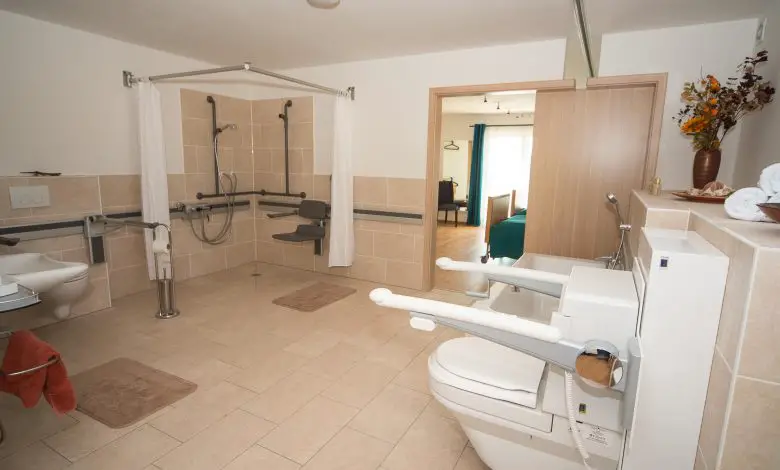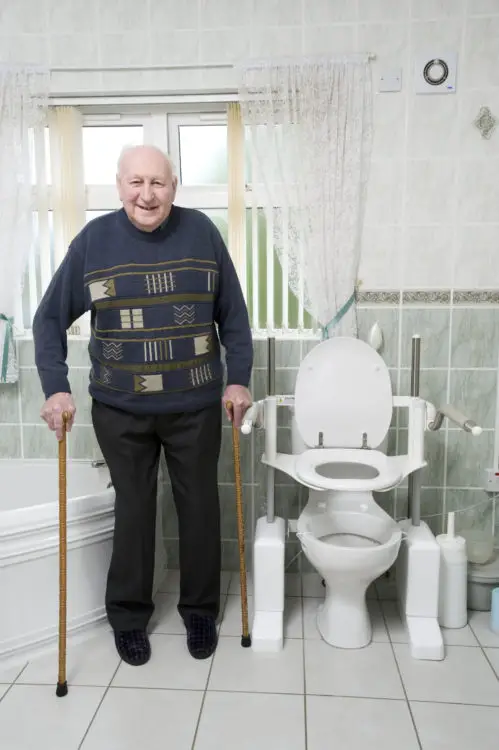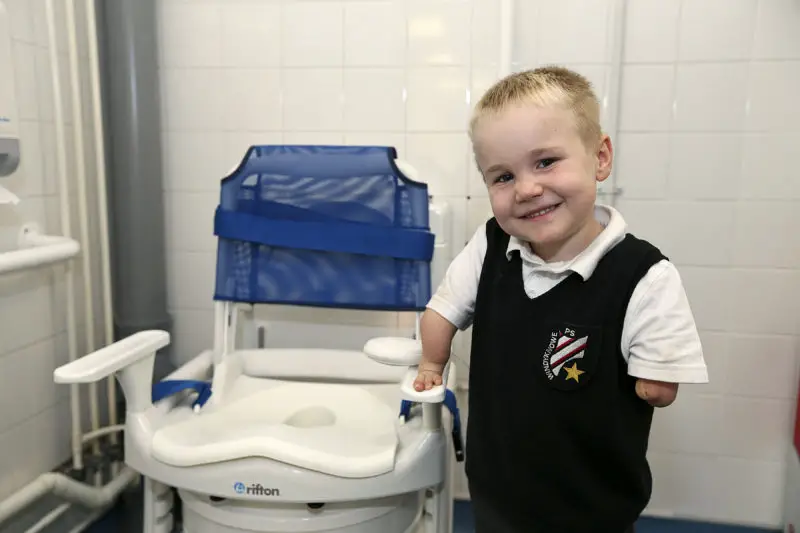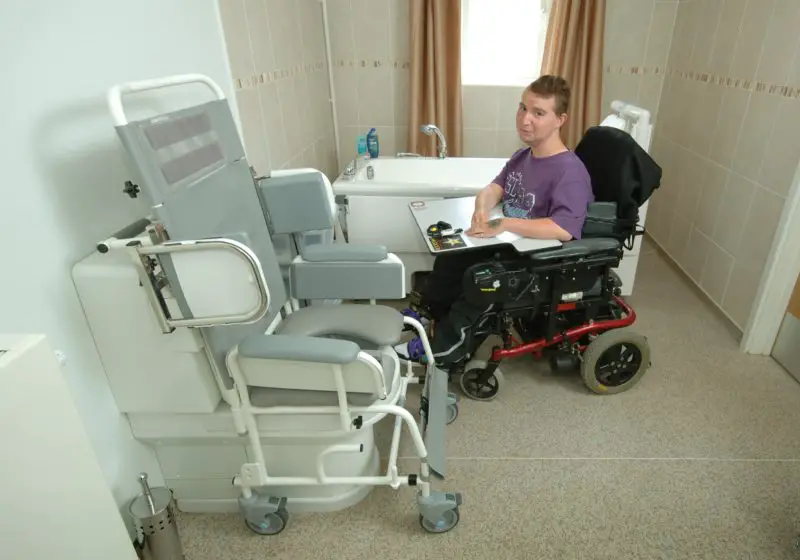
Simple ways to make your bathroom accessible
If using your bathroom is a daily pain, then following these simple tips from bathroom specialist Clos-O-Mat will make life a lot easier.
Regardless of ‘ability’, 20% of adults have difficulty doing everyday tasks, including carrying out their personal care. Using functional rooms, such as the bathroom, is the second biggest day-to-day problem faced by families with a severely disabled child. Yet the bathroom, cloakroom or toilet (whatever you choose to call it) is the one room you use more than you think – we ‘go’ on average eight times a day!
But despite issues, and the frequency with which we face them, many people don’t do anything about it. Our typical British reserve means we often don’t discuss going to the toilet, even with professionals. You might have told your Occupational Therapist that you’re struggling to get out of the chair, but have you admitted to having the same problem getting on and off the toilet?
Either way, don’t despair, help is at hand. If you’re struggling to access your bathroom, there are numerous things you can do to alleviate the situation, many of which are simple and don’t require specialist input.
Who will use the bathroom?
 First thing’s first, think about who uses, and who will be using the bathroom? Is it just you? Or will other family members and a carer use it too? This is essential in helping you shape your bathroom around everyone’s differing needs. For example, you might need a removable toilet solution if someone else without mobility issues will use it.
First thing’s first, think about who uses, and who will be using the bathroom? Is it just you? Or will other family members and a carer use it too? This is essential in helping you shape your bathroom around everyone’s differing needs. For example, you might need a removable toilet solution if someone else without mobility issues will use it.
Getting into the bathroom
Think about actually being able to physically get into the room. Does it have a level access, so if you’re in a wheelchair, you can roll in? If not, it’s not a lot of work to get the floor surfaces levelled and something smooth fitted over it.
And what about the door? A door is a big obstacle to open, negotiate and close behind you. Is it wide enough to allow a wheelchair through? Sometimes just adding a couple of extra inches can make a world of difference. Also, if there’s wall space, it may be an option to replace a conventional hinged door with a sliding one.
Updating bathroom flooring
What’s on the floor? Carpet gives you grip, but that impedes the ability to move any wheeled support system over it, and it isn’t the most hygienic solution in a damp, if not wet, area. Tiles or linoleum are practical but, if smooth, can be slippery and create glare when wet. The best option is a matt, textured finish floor. It will enhance safety and practicality. Also, use colour to help the eye focus on specific areas.
Tackling the toilet
For many, simply getting on and off the toilet is a major obstacle. But sometimes just adding a support arm can help.
If this doesn’t suffice and it’s possible to move plumbing and pipework, you could move the washbasin a bit closer, so that you can use that to lean on.
Also, there are systems that are based on a track that is fixed to the wall, so you can add and move accessories, such as washbasins, arm supports, shower seats, shower sprays etc. Whatever solution you choose, make sure it is close enough for you to reach without stretching, and that it’s at a useable and comfortable height.
Keep in mind, though, that with any fixture being used to bear your weight, you’ll need to make sure whoever is doing the installation work is aware of the intention. That way the wall can be made strong enough to load bear.
It is important to install things the right way. This includes adding support bars or changing the plumbing in your bathroom. Using an online plumbing estimate tool can help you plan and give you some idea of the work and costs involved.
Support arms are also available floor mounted if the wall is not strong enough, for example, because it’s a stud wall.
If you use a riser recliner chair, the chances are you’d benefit from a similar device for the loo, known as a toilet lift. You could instead go a step further and change your conventional WC for a height adjustable toilet, so you can lower and raise the toilet to help you get on and off, yet sit comfortably and stably whilst using it.
Toilet aids for children are key to helping the child develop self-care skills. The choice of which one to go for depends on how much help a child needs.
Their size is also often the major influencing factor. The child needs to be able to get on and off the toilet easily, so in many cases, the simple addition of a low stool can help them step up onto the seat.
 They also need to be able to sit on the seat safely and comfortably, whilst they perform their ablutions. To help them, there are orthopedically-contoured supports, which can be used for adults too. These can be simple clip-on systems or can be fixed to the WC.
They also need to be able to sit on the seat safely and comfortably, whilst they perform their ablutions. To help them, there are orthopedically-contoured supports, which can be used for adults too. These can be simple clip-on systems or can be fixed to the WC.
There are also different-sized seats to accommodate smaller or larger people. A junior soft seat helps children and small adults ensure they are positioned correctly over the pan. A bariatric version does the same for people of larger build.
Key in all toilet considerations is your hygiene and dignity. Would you want a loved one or a stranger to help you ‘go’ and wipe your bum? If you need help in such an intimate area, a wash-and-dry toilet solves the problem.
You can get versions that simply bolt onto an existing WC. This is fine if it’s a short-term solution, and if it won’t be subjected to ongoing, significant stresses from someone transferring from a wheelchair. If it will be needed permanently, then an integrated unit that looks like a conventional WC, but has built-in washing and drying, is the best choice.

Showering
If your ability to walk unaided, or to transfer, is impeded, then a shower chair that rolls over the toilet could be useful. You may need to adjust the height of your toilet pan and/or seat to achieve the optimum hygienic spacing. Versions for children are also available, with the most advanced being fully adjustable, both the seat height and depth, so it can ‘grow’ with you or your child.
Using a hoist
The above options all assume you have a degree of independent mobility, whether using your legs or a wheelchair. If those are out of the question, a hoist provides a safer means of transfer onto the toilet or into the shower. Wheeled frames or motorised systems that use a ceiling track cover the options, and depend on usage.
Do you need to go from one room to another? What is the room layout? Is the ceiling strong enough and what is the positioning of existing structural supports, fixtures and fittings? What is the budget? Answer these questions before you plan anything to help narrow down your options.
Getting your bathroom right has a huge impact on daily life. So many of the aids mentioned are simple to effect, but mean you or your child’s dignity, independence and control are retained, in a very intimate area.
By Clos-O-Mat
Essential Bathroom Modifications for Accessibility
Making your bathroom accessible doesn’t have to involve a full renovation. Here are some essential modifications that can greatly improve safety and usability:
- Grab Rails: Installing grab rails near the toilet, shower, and bathtub provides crucial support for stability. Consider Bathroom Grab Handles for a sturdy and removable option.
- Walk-in Showers: A curbless or walk-in shower is one of the best ways to improve accessibility, eliminating trip hazards and providing better wheelchair access.
- Shower Chairs and Bath Seats: Sitting while bathing ensures safety and comfort.
- Raised Toilet Seats: A higher toilet seat reduces strain on joints and makes transferring easier. Look for adjustable options for personalized comfort.
- Non-Slip Flooring: Slippery floors are a major hazard. Using non-slip tiles, rubber mats, or anti-slip coatings can prevent falls.
Expert Insights: Latest Trends in Accessible Bathrooms
According to the UK’s Centre for Accessible Environments, designing bathrooms with universal access in mind can enhance independence and allow people to remain in their homes longer. A study from Age UK also found that nearly 30% of falls at home occur in the bathroom, highlighting the importance of non-slip features and proper handrails.
Smart Technology for Enhanced Accessibility
Advancements in smart home technology have led to new accessible bathroom solutions:
- Motion-activated taps help people with limited dexterity control water flow effortlessly.
- Smart toilets with bidet functions and remote controls improve hygiene and ease of use.
- Voice-activated lighting ensures well-lit areas without the need to reach for switches.
For a complete bathroom transformation, consult an occupational therapist to tailor the modifications to your specific needs.